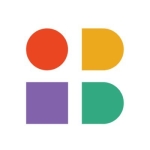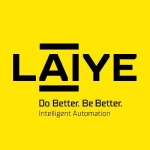How has it helped my organization?
We had to extract some data from a commercial policy, which can run up to 300 pages, for a client. It was a challenge to look for the action data and extract it out of those 300 pages. With ABBYY FlexiCapture, we were able to do that easily by using its repeating group feature. It was helpful. For doing the same in Kofax, we would have had to heavily rely on scripting. There is no way of doing it with low code.
What is most valuable?
Its ease of use is valuable. It is easy to use and configure.
Its ICR is really good at handwriting recognition. The last version of ABBYY FlexiCapture that I used was better than other tools such as Captiva and Kofax. The base OCR engine of ABBYY is also very good. In fact, Kofax was using ABBYY's OCR engine in the last version, but they came up with their own engine.
One good thing about ABBYY is the training. All the training courses are available in ABBYY University. They were not free initially. They were instructor-led, but now, ABBYY has made them open for everyone to learn, whereas with Kofax, you have to purchase training courses, and then you can learn. With ABBYY, everything is there in their knowledge base.
What needs improvement?
I have not used it in the last six months, but at that time, there were some stability-related issues. These were known issues. They might have already fixed them, and it might have been improved by now. We had raised tickets, and they were working on various tickets. The known bugs included crashing of the application when there were more than 500 pages in the configuration window. It did not work in such cases.
There were also issues related to the classification by training. There is a feature in ABBYY where you can classify the type of a document, but it was not very effective when you trained it on a lot of variations. It worked fine for up to 10 or 15 variations but for anything beyond that, it was a mess. It wouldn’t work.
They can have more advanced workflows. They can have some custom status in their workflow. It was there, but they can introduce more cases such as triggering an email or interacting with other systems with APIs. They can be included as stages in their workflow rather than doing it all by scripting.
They can also work more on connectors. The ABBYY connectors are there for SAP and SharePoint, but they can include more connectors. ABBYY's usage has increased. I have seen many companies using ABBYY in recent times, and it will help a great deal if there are more connectors to connect with the end systems.
For how long have I used the solution?
I had worked with ABBYY FlexiCapture for around five years. Currently, I'm working with Kofax, and I have not worked with ABBYY for the last six months. The last version that I used was version 12.
Buyer's Guide
ABBYY Vantage
October 2025
Learn what your peers think about ABBYY Vantage. Get advice and tips from experienced pros sharing their opinions. Updated: October 2025.
869,089 professionals have used our research since 2012.
What do I think about the scalability of the solution?
I have not seen FlexiCapture environments with a lot of users. At the most, I have seen 20 users, which included five or six business users, five or six developers, and a few people from the admin and config team. That could be because at the time of implementing a project, not many people were required. When we handed over the project, more business users would have been created. It all depends on the phase of the project.
How are customer service and support?
We did try to reach out to them for some of the challenges. They wanted us to take some proper services consulting, but we were able to manage on our own. We did not interact with the services consultant from ABBYY.
Which solution did I use previously and why did I switch?
I used ABBYY FlexiCapture in my previous organization. Currently, I'm working with Kofax. Both of these organizations are service-based, and they provide services related to implementation, development, and other things. The tool that we use is decided by the client. When we approach a client, if they have already purchased a license of ABBYY or Kofax, we have to execute the use cases by using that tool. Otherwise, it will be a loss of a lot of money for them.
If they don't have a tool, we do try to suggest what would be best for them, but it is up to them to decide which tool they want to go for. They can go for ABBYY, Kofax, TotalAgility, or any other tool.
I would recommend ABBYY FlexiCapture for those use cases where only OCR is needed, and there is no need for business processes. That's because not much branching is there in the workflow. It does not have a powerful workflow feature. If you are using it in association with any BPM or RPA tool, there is the ease of configuration, extraction, and classification. That's one thing that I like about ABBYY.
FlexiCapture is a good product. It can be used for any kind of use case that requires OCR. Except for the unstructured content part, which is there in Kofax, I cannot think of a use case that cannot be solved by using this solution. It caters to most needs of the projects. ABBYY is positioning this tool as only an OCR tool, not as a BPM tool. Kofax is an OCR and BPM tool. That's the difference, but I would not like ABBYY to change it because that's what makes ABBYY the simplest. There is a single component, which makes it easier to understand. When you add more features and modules, the complexity also increases from an understanding perspective. We can suggest more features, but it would be a trade-off.
How was the initial setup?
It is a straightforward setup. If you have a cloud deployment, you just need your tenant. You simply start using it after installing a thin client on your machine.
I have used ABBYY on the cloud. I had used ABBYY as a standalone installation on my machine. I have used ABBYY as a distributed solution within our VPN.
Deploying simple bug fixes in ABBYY doesn't take much time. It can be done within two minutes. When deploying the whole project from scratch, I have not seen it take more than 10 minutes. It can be done easily, and it is a straightforward process. To import from one environment, you just change the variables to cater to the needs of another environment. You just go there and import it. It is that simple.
What's my experience with pricing, setup cost, and licensing?
You need to purchase user licenses, and you also need to purchase the license for the pages. User licenses are required for your developers to use the developer tools, and you also need to ensure that there is a pool of licenses for the business users so that they can log in and perform their activities.
What other advice do I have?
It has a very simple GUI. When a person is using ABBYY FlexiCapture for the first time, I would suggest exploring all the features, especially the Flexilayout Language, because it is very easy to explore all the features. It provides you with a great level of flexibility to configure complex documents. ABBYY is no-code, but there are a lot of things that you can do by scripting in Flexilayout Language. So, I would recommend not restricting yourself to the GUI-based commands. You should go and try Flexilayout Language. It is a very powerful feature in ABBYY.
ABBYY is launching new products. It is not that they're not changing anything. They have launched Vantage 2.1, which is very good at cognitive capabilities.
While pitching their tool, every product's sales team tells clients about certain cognitive capabilities and other features, which might not be possible for specific use cases. So, client expectations should be set correctly. One of the clients was expecting us to use the cognitive capabilities of FlexiCapture, but FlexiCapture is not that cognitive. Vantage is cognitive, but FlexiCapture is not.
I would rate it a seven out of ten. There is ease of use and ease of configuration, but they need to include more features. They need to make the product more stable in dealing with more variants.
Disclosure: My company does not have a business relationship with this vendor other than being a customer.






















